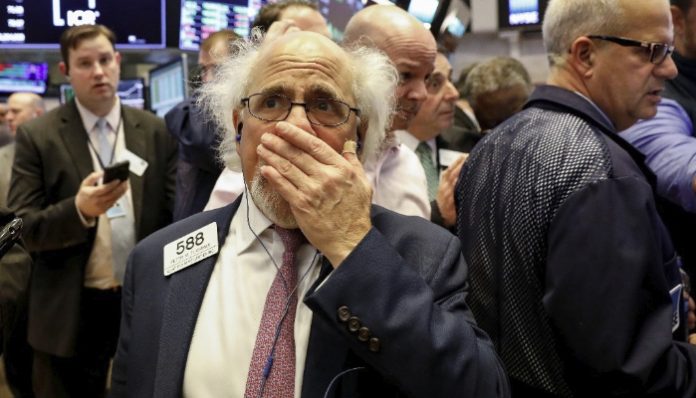Stocks are tumbling today after an unprecedented economic report scattered bulls to the wind. Data on January’s U.S. producer prices, released this morning, revealed a stunning 1.3% month-over-month surge in the producer prices index (PPI). It blew away the Dow Jones estimate of just 0.4%.
In fact, January’s headline PPI spike is the largest on record. Core PPI, which removes food and energy components, shot 2.0% higher year-over-year as well. It too exceeded expectations, dwarfing the 1.1% estimate while logging the largest core PPI “beat” in the index’s history.
“PPI numbers are something else…,” said a concerned economist.
“This is consistent with multiple CEOs complaining of accelerating inflation for their inputs.”
The PPI eruption isn’t too surprising given that January retail sales (also released today) soared 5.3%, beating the 1.2% estimate handily.
“[The retail sales data] fits in perfectly with the present narrative of strong earnings/growth (and rising inflation) and will place further upside pressure on Treasury yields,” explained Vital Knowledge founder Adam Crisafulli, in a note.
The 10-Year Treasury rate hit a high of 1.33% – a level unseen since February 2020 – shortly before noon. The 30-year rate, meanwhile, is holding steady at yesterday’s high.
But everything else is falling. Tech, in particular, is getting hammered alongside the market’s other overachieving sectors. Even gold, an inflationary hedge, is down.
Some analysts aren’t too worried about the rising rates. Not yet, at least.
“We are filling in a major gap from March of 2020. So long as we remain orderly and rates move for the right reasons, it’s short-term okay,” remarked Gregory Faranello, head of U.S. rates trading at AmeriVet Securities.
“But the Fed is watching. Should financial conditions begin to tighten with the move higher in rates, the Fed will react. And quickly.”
Nomura quant strategist Masanari Takada doesn’t see the current 10-year yield (1.33%) as a significant hurdle for stocks, either. If it climbs any higher, however, he says the market could quickly take a bearish turn.
“[I] also envision a risk scenario in which [commodity trading advisors’] move to the short side in [U.S. Treasury] futures (TY) becomes essentially unstoppable, pushing the 10yr yield to above 1.5% and forcing US equities (the S&P 500) to adjust downward by 8% or more,” Takada said in a note.
An 8% correction would put the S&P back near its September 2020 highs. If Takada’s right, it could be a major buying opportunity.
Or, the prelude to another market-wide collapse.
But with the Fed backing equities, the former seems far more likely than the latter. Rising inflation – something we’ve mentioned many times over the last few months – is likely to become a bigger part of the mainstream financial media’s narrative moving forward. Today’s insane PPI “beat” confirmed that economists have vastly underestimated just how quickly inflation will arrive.
And with a $1.9 trillion stimulus package in the works, inflationary pressure is going to only get worse. That has the market caught in another “good news is bad news” position, where typically bullish data has investors ready to sell.
We’re not looking at a full-blown correction just yet, but today’s Treasury yield drama may represent the beginning of one.
Especially if the rise in yields has further to go.








